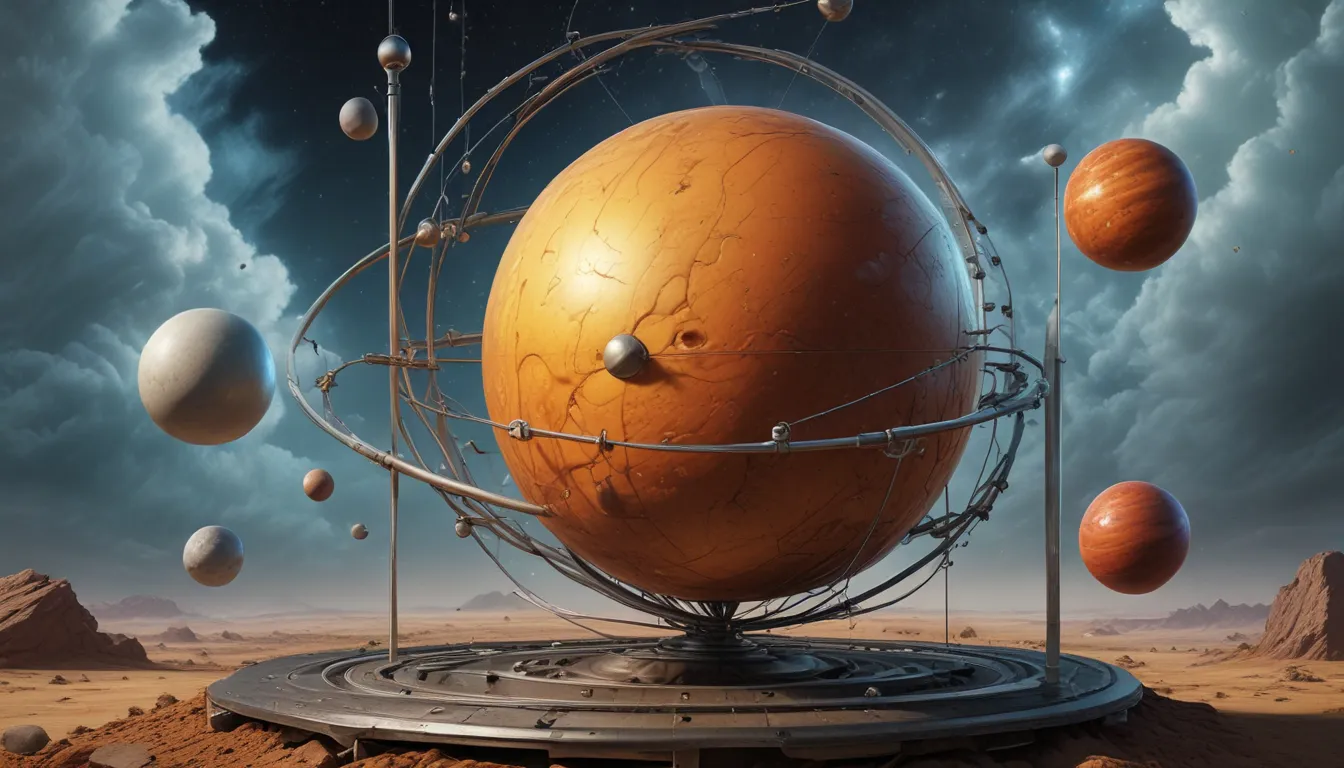A Note About Images: The images used in our articles are for illustration purposes only and may not exactly match the content. They are meant to engage readers, but the text should be relied upon for accurate information.
When we look up at the night sky, we are reminded of the vastness and complexity of the universe. The stars, planets, and galaxies that dot the cosmic canvas are governed by intricate forces, one of which is gravity. Gauss’s Law of Gravitation, discovered by the brilliant mind of Carl Friedrich Gauss, is a fundamental principle that sheds light on the mysteries of gravitational forces. In this article, we will unravel the enigmatic nature of Gauss’s Law of Gravitation and explore 12 fascinating facts that highlight its importance in shaping our understanding of the cosmos.
Understanding Gauss’s Law of Gravitation
Gauss’s Law of Gravitation serves as a cornerstone in physics, providing a framework to comprehend the gravitational forces that shape our universe. This law, formulated by Carl Friedrich Gauss, elucidates the force of attraction between two objects in space, whether they are celestial bodies or objects on Earth. It follows an inverse square relationship, meaning that the gravitational force weakens as the distance between objects increases. This principle applies universally, from the smallest particles to the largest celestial bodies, influencing everything from planetary orbits to the shape of stars.
The Influence of Gauss’s Law of Gravitation
1. Motion of Celestial Bodies
Gauss’s Law of Gravitation plays a crucial role in explaining the motion of planets, moons, and comets in our solar system. By governing the gravitational interactions between celestial bodies, this law provides insights into the orbits and paths these objects follow through space.
2. Tides on Earth
The gravitational force described by Gauss’s Law of Gravitation is responsible for the phenomenon of tides on Earth. By understanding the gravitational interaction between the moon, the sun, and our planet, we can predict the rise and fall of ocean tides with precision.
3. General Relativity
This law served as a precursor to Albert Einstein’s theory of General Relativity, refining our understanding of gravity and its connection to spacetime. By building upon Gauss’s work, Einstein revolutionized our perception of the gravitational forces that govern the cosmos.
Visualizing Gauss’s Law of Gravitation
1. Gravitational Field Lines
Similar to electric field lines, gravitational field lines can be used to visualize the effects of Gauss’s Law of Gravitation. These lines provide a graphical representation of the direction and strength of gravitational forces in a given region, offering insights into the complexity of gravitational interactions.
2. Shape of Celestial Bodies
Gauss’s Law of Gravitation explains why celestial bodies tend to be spherical in shape. The uniformity of gravitational forces acting in all directions results in the natural formation of round objects under their own gravitational pull.
Applications of Gauss’s Law of Gravitation
1. Black Holes
Even in the extreme conditions surrounding black holes, Gauss’s Law of Gravitation holds true. It is instrumental in understanding the gravitational collapse and behavior of these enigmatic cosmic entities, revealing insights into the mysterious nature of these celestial phenomena.
2. Orbital Periods
By applying Gauss’s Law of Gravitation, scientists can calculate the orbital periods of planets, satellites, and other objects in space. This knowledge is essential for mapping out the complex motions exhibited by celestial bodies, aiding in our exploration of the cosmos.
Unveiling the Mysteries of Gauss’s Law of Gravitation
Gauss’s Law of Gravitation is a fundamental principle that underpins our understanding of the gravitational forces that govern the universe. From planetary orbits to black holes, this law offers profound insights into the intricate dance of celestial objects in space. By exploring the enigmatic facts surrounding Gauss’s Law of Gravitation, we gain a deeper appreciation for the elegance and complexity of the forces that shape our cosmos.
Conclusion: Embracing the Wonder of Gauss’s Law of Gravitation
In conclusion, Gauss’s Law of Gravitation stands as a beacon of knowledge in the realm of physics, guiding our understanding of the gravitational forces that bind the universe together. Through this law, we unveil the mysteries of celestial motion, planetary orbits, and the shape of stars. By delving into the depths of Gauss’s Law of Gravitation, we embark on a journey of discovery, unraveling the secrets of gravity and its profound influence on the cosmos.
FAQs: Unveiling the Secrets of Gauss’s Law of Gravitation
Q: What is Gauss’s Law of Gravitation?
A: Gauss’s Law of Gravitation is a fundamental principle in physics that describes how gravitational forces are generated and interact with other masses. It provides insights into gravitational fields and their relationship to mass distribution.
Q: Who formulated Gauss’s Law of Gravitation?
A: Gauss’s Law of Gravitation was formulated by the renowned German mathematician and physicist, Carl Friedrich Gauss. His contributions to mathematics and physics have had a lasting impact on our understanding of the universe.
Q: How does Gauss’s Law of Gravitation differ from Newton’s Law of Gravitation?
A: While Newton’s Law of Gravitation focuses on point masses, Gauss’s Law extends this concept to distributed masses. It enables us to calculate gravitational fields inside solid objects, considering the shape and distribution of mass.
Q: What are practical applications of Gauss’s Law of Gravitation?
A: Gauss’s Law of Gravitation has practical applications in studying celestial bodies, satellite orbits, and space missions. It plays a vital role in calculating gravitational forces for accurate space navigation and understanding our solar system’s dynamics.
Delving Deeper into the Mysteries of Gravity
Gauss’s Law of Gravitation unveils the secrets of gravity and its profound impact on the universe. By exploring the enigmatic facts surrounding this fundamental principle, we gain a deeper understanding of the forces that shape the cosmos. As we continue to probe the mysteries of gravitational interactions, we embark on a journey of discovery, unraveling the complexities of the universe’s governing laws. So, join us in this quest for knowledge and embrace the wonders of Gauss’s Law of Gravitation!






